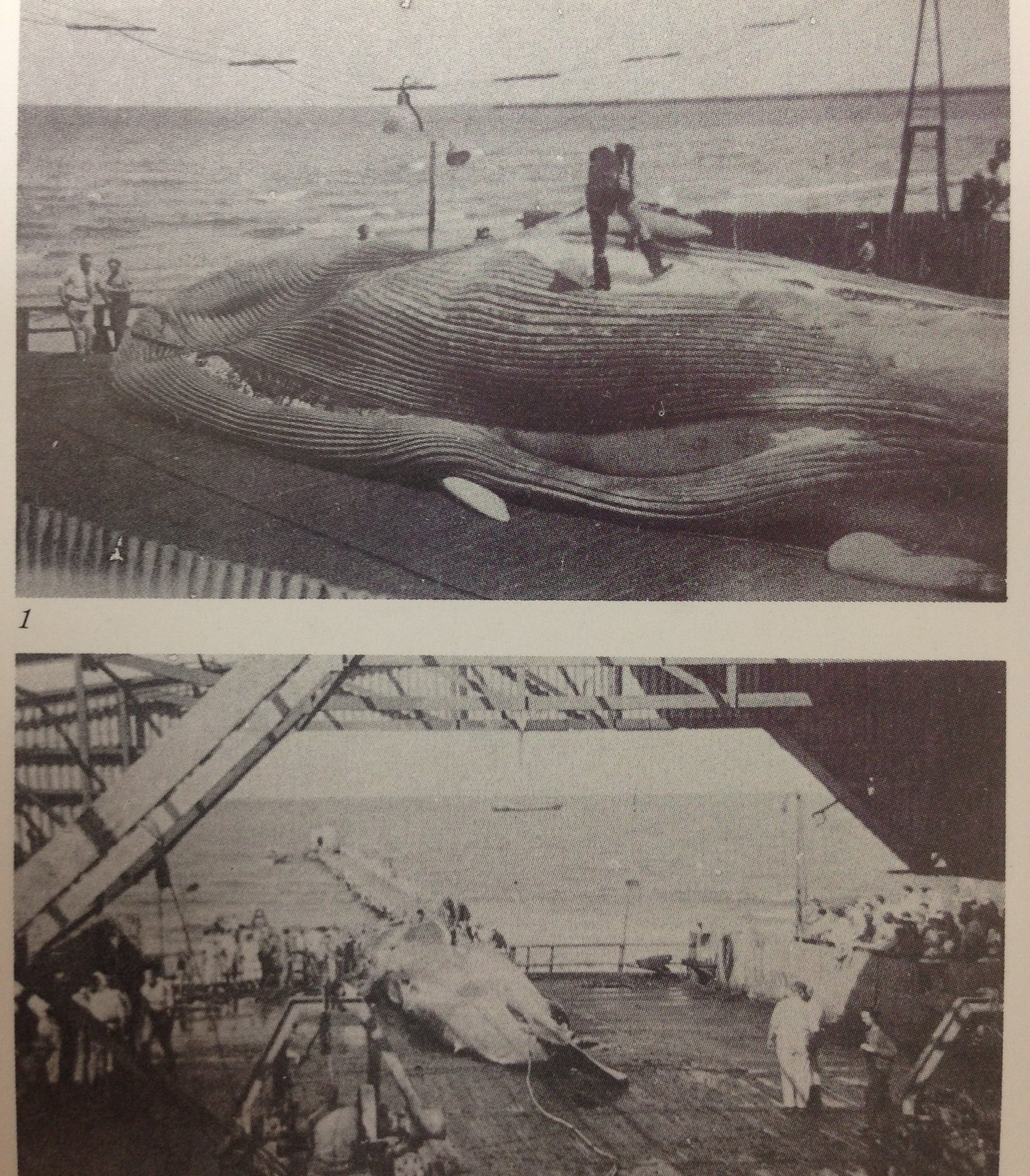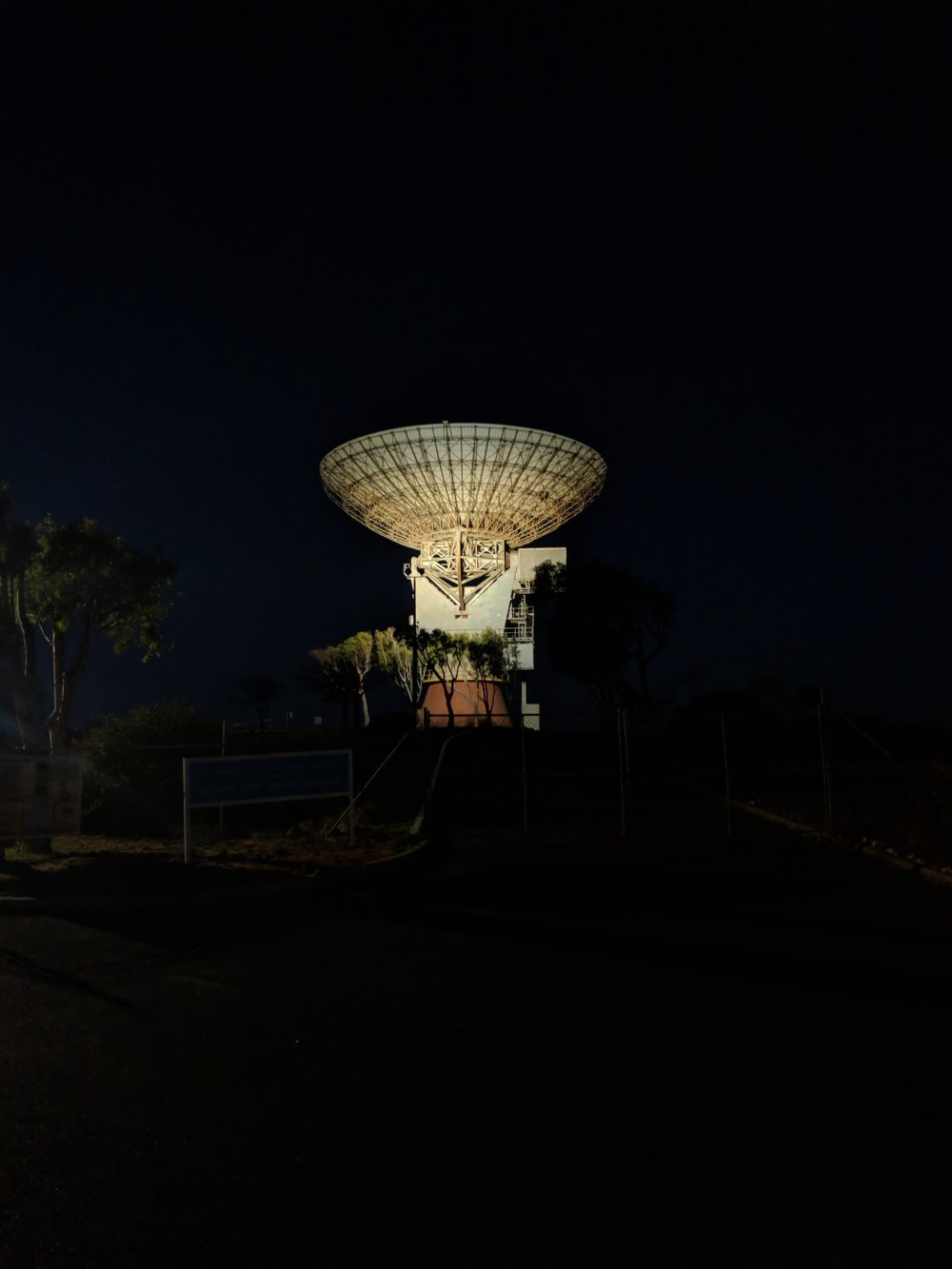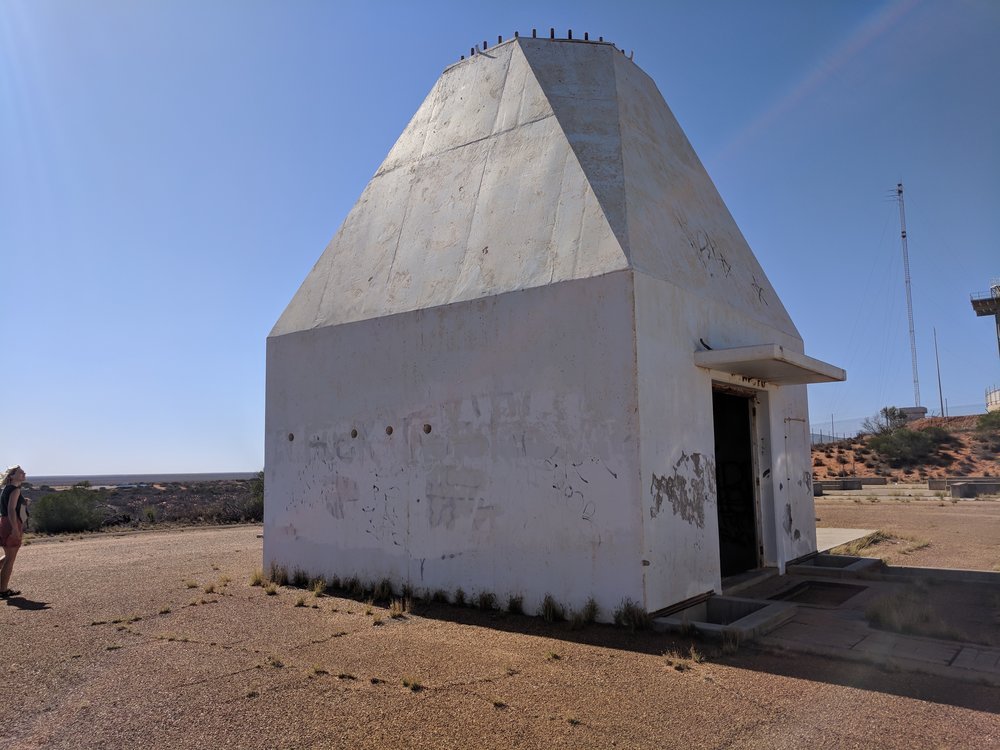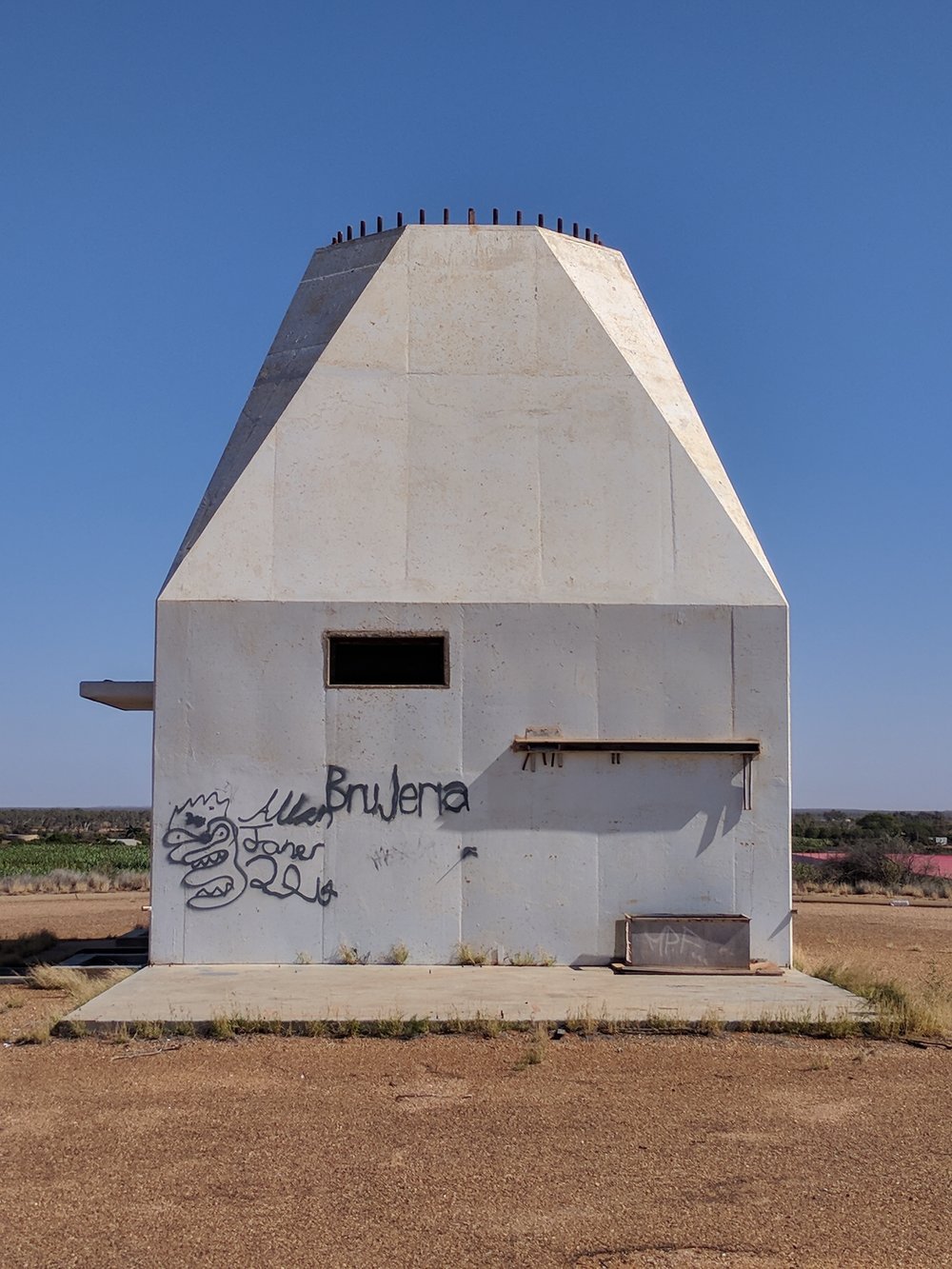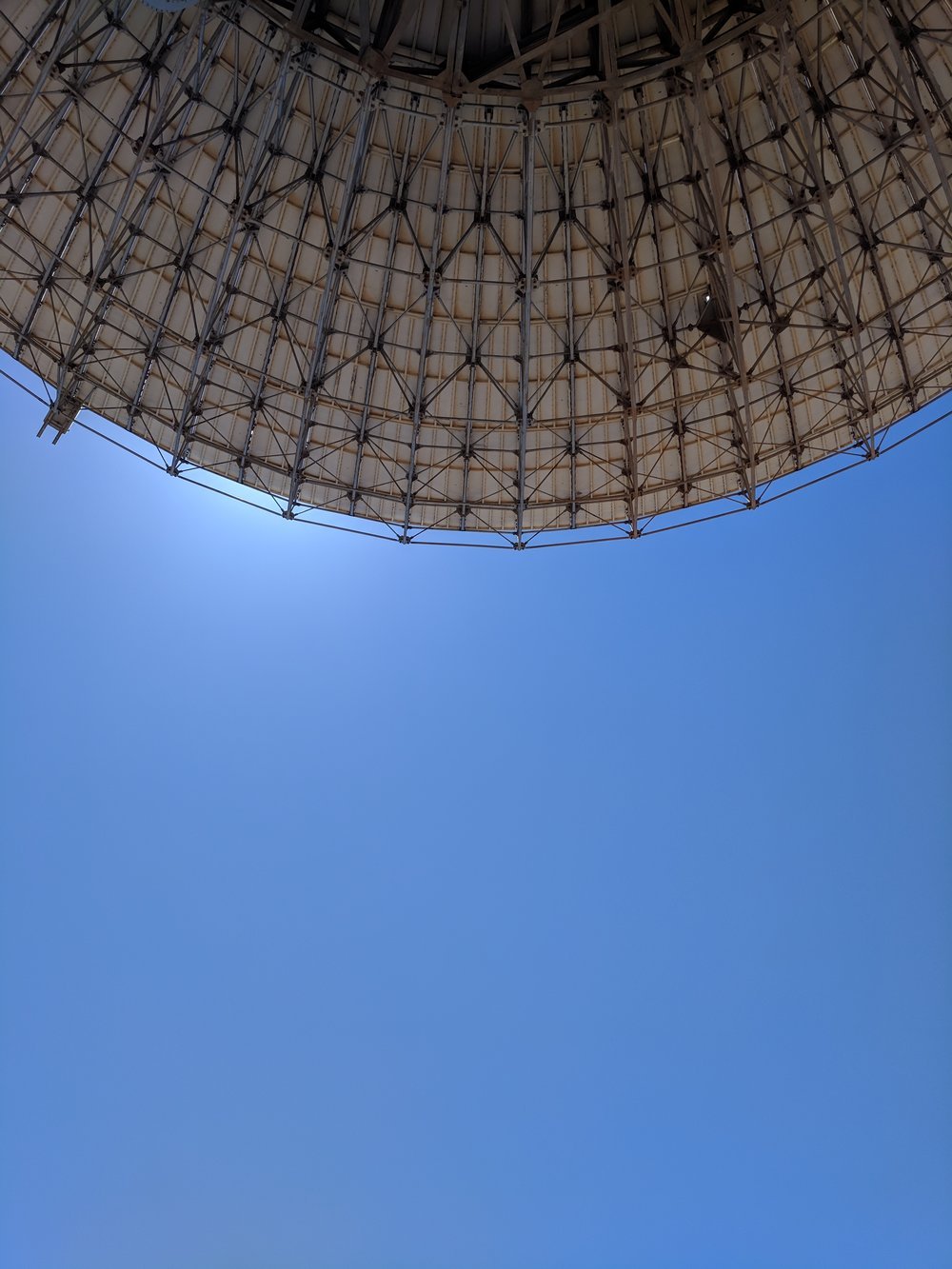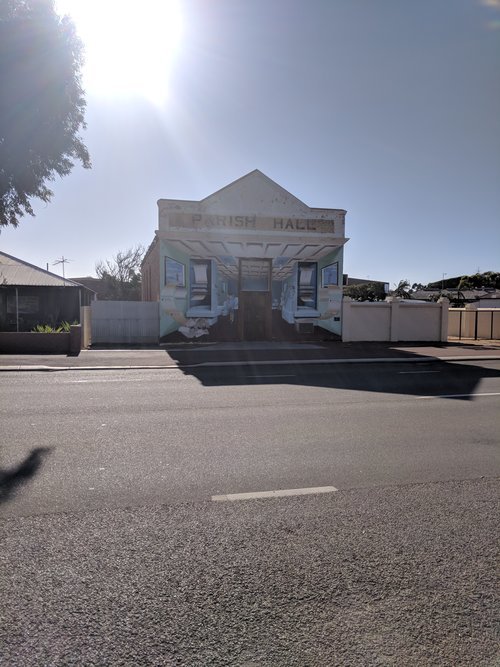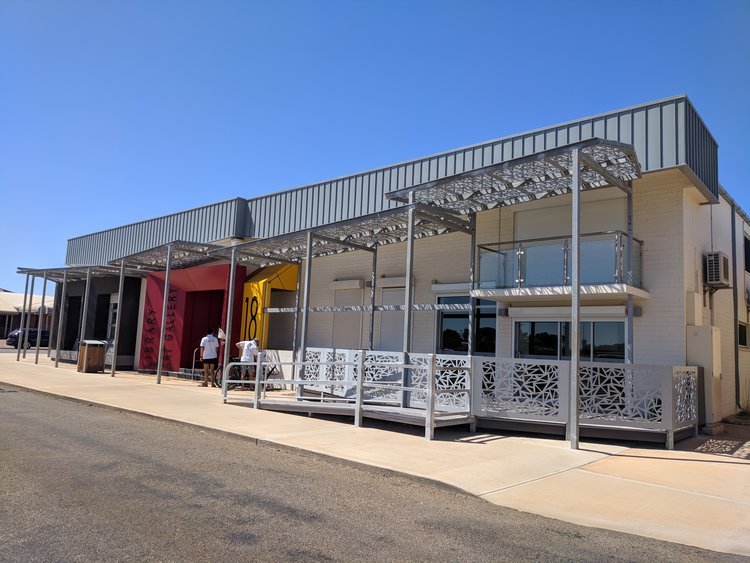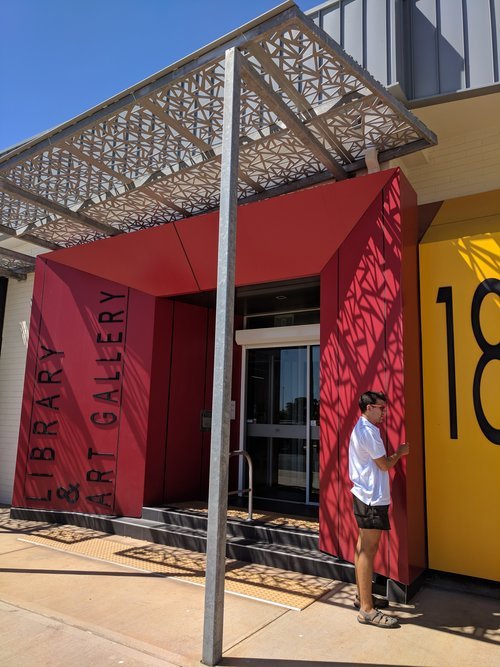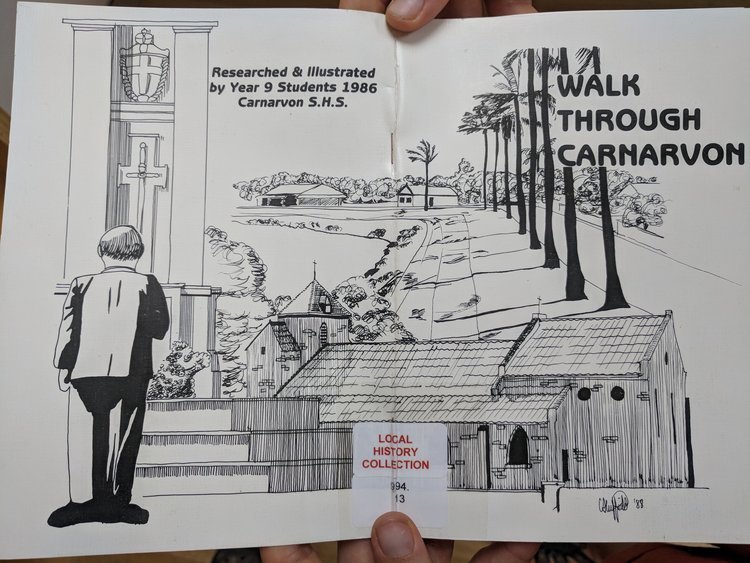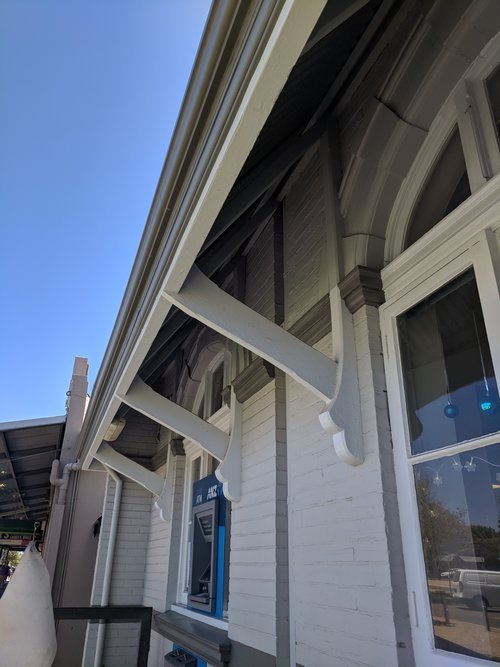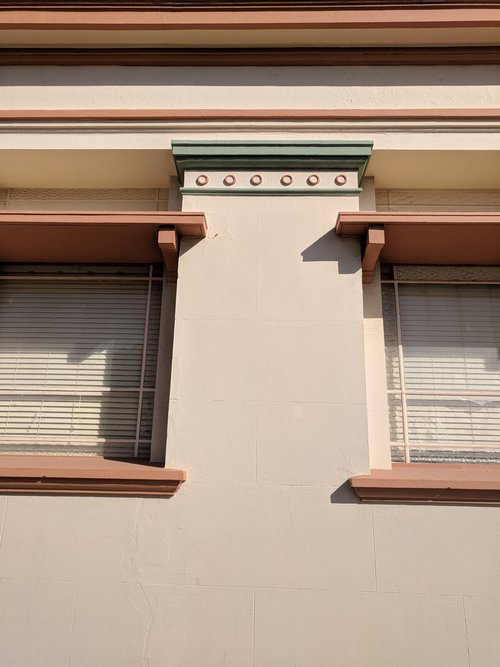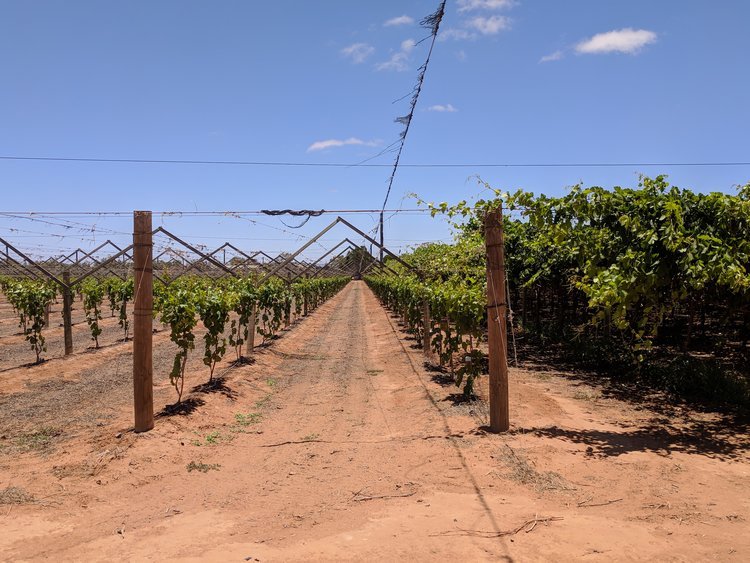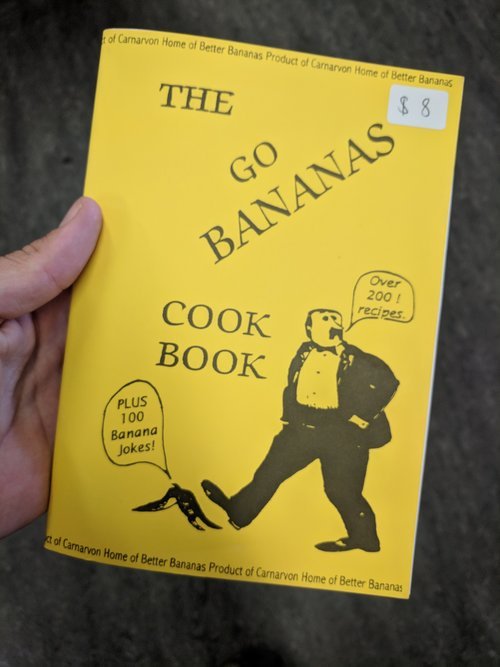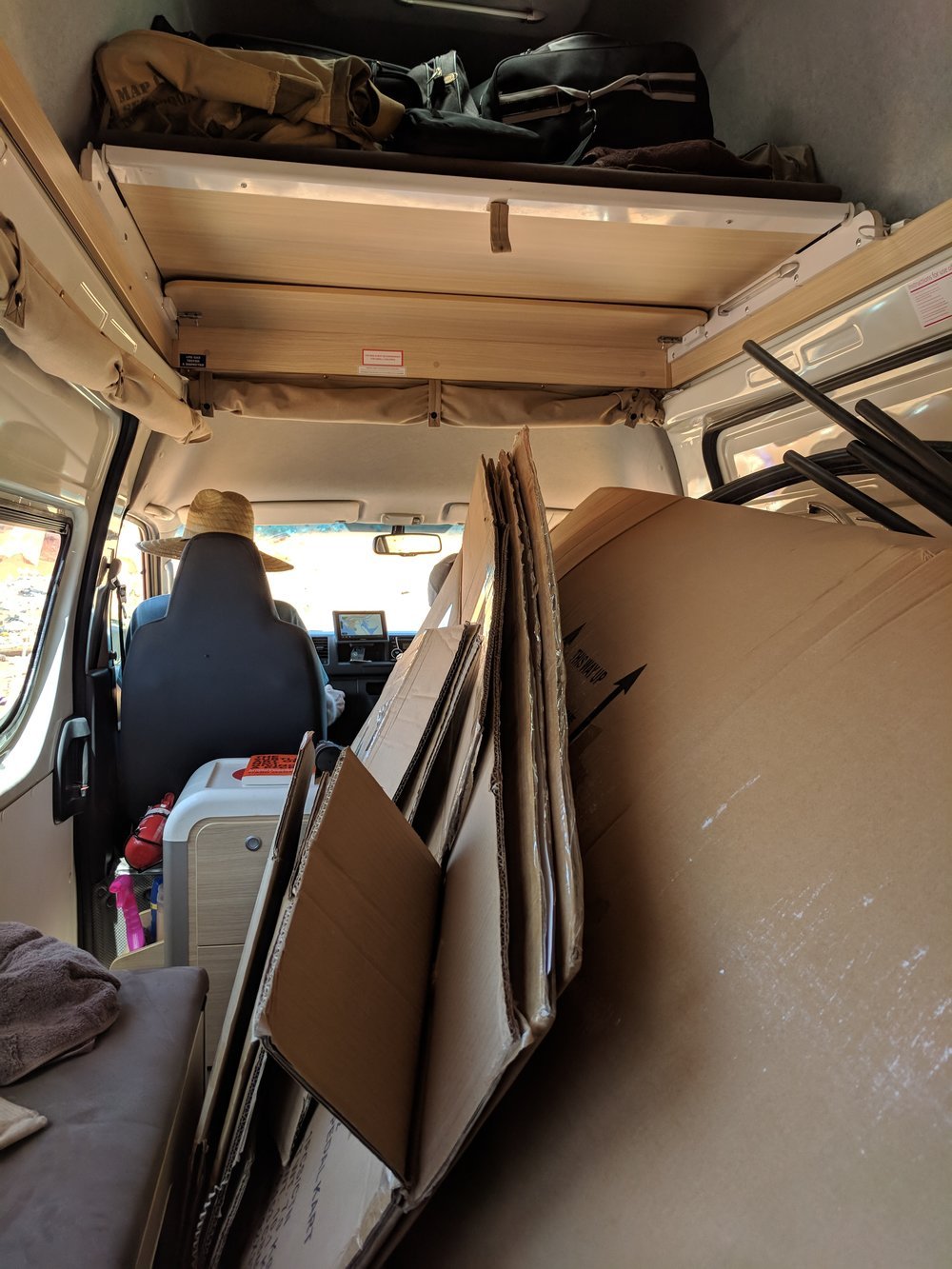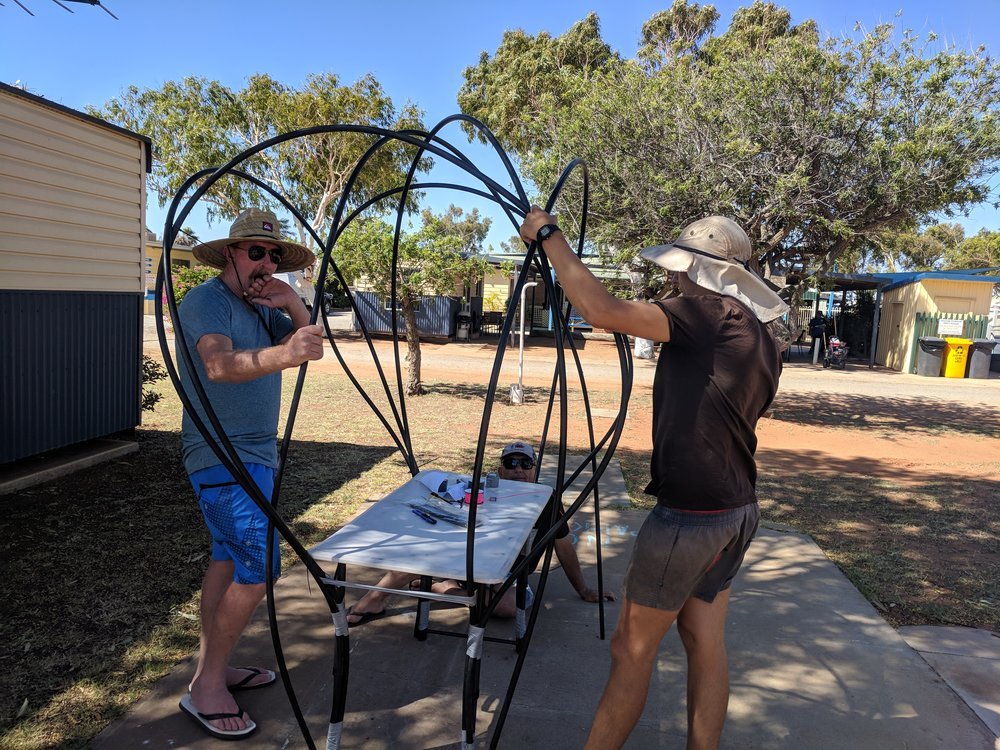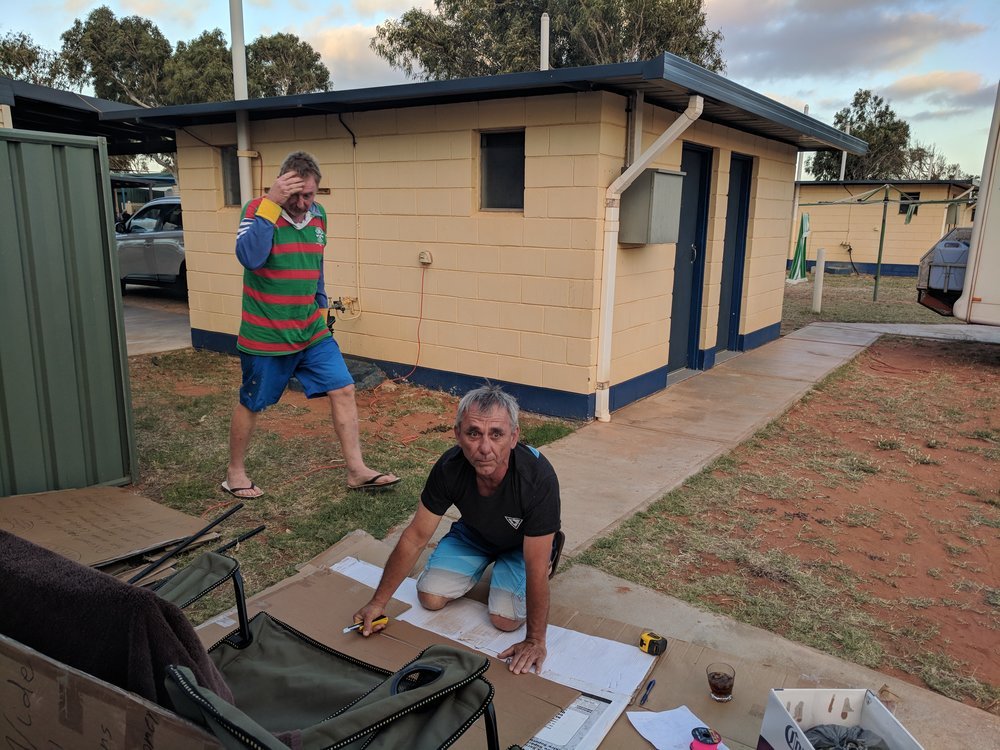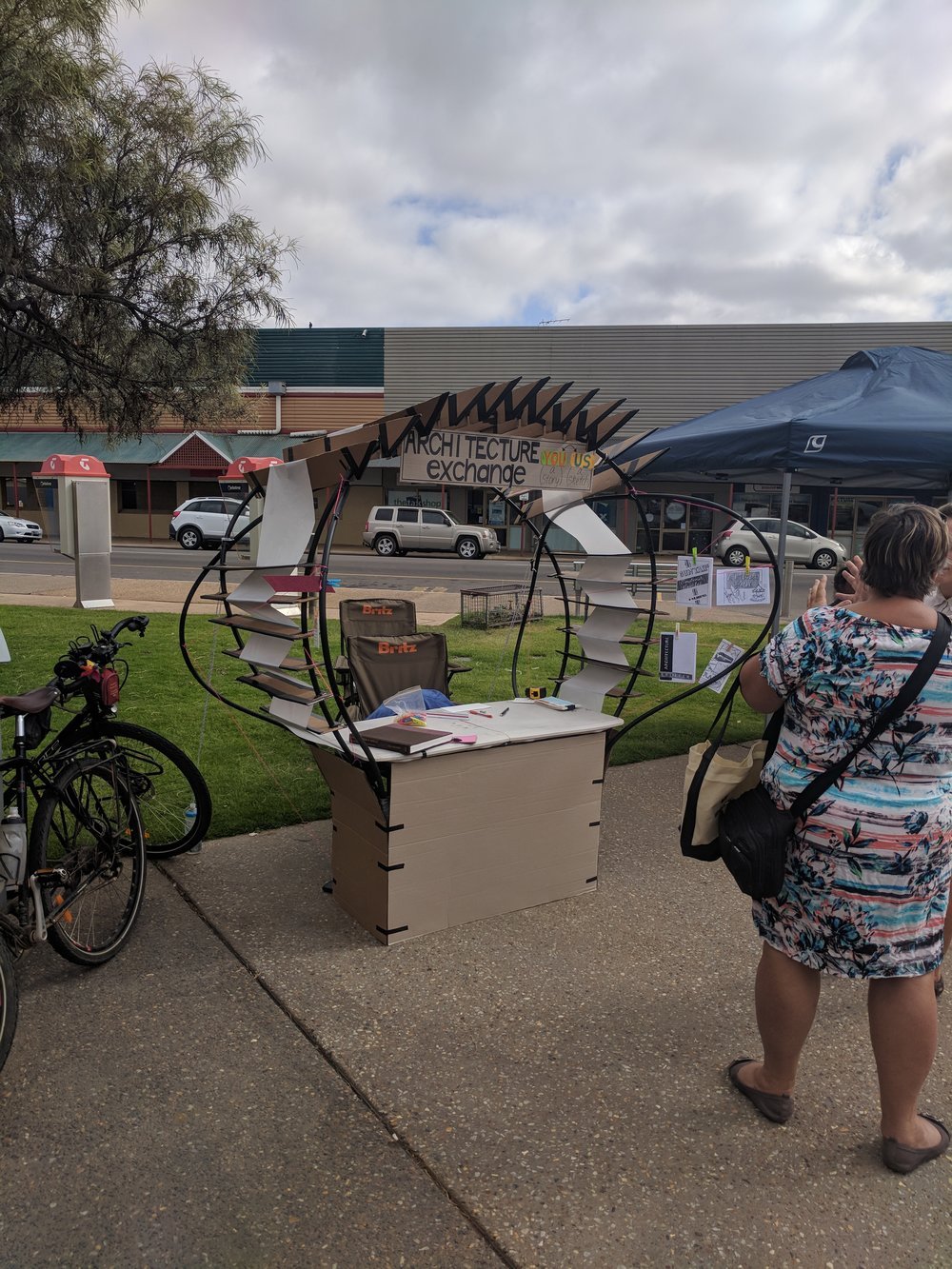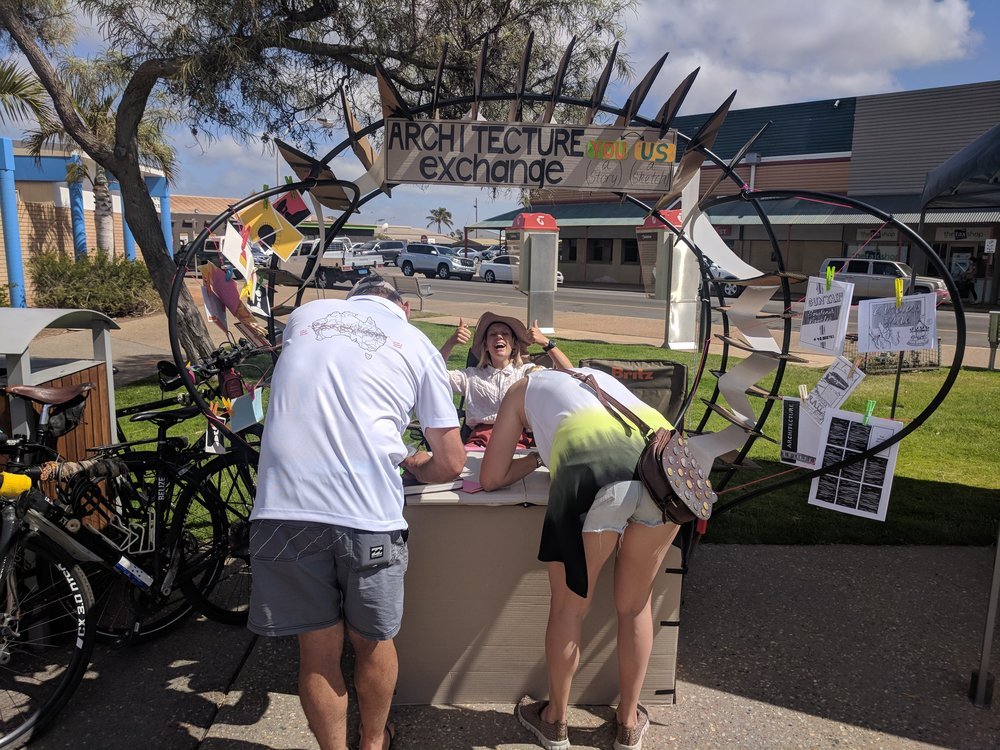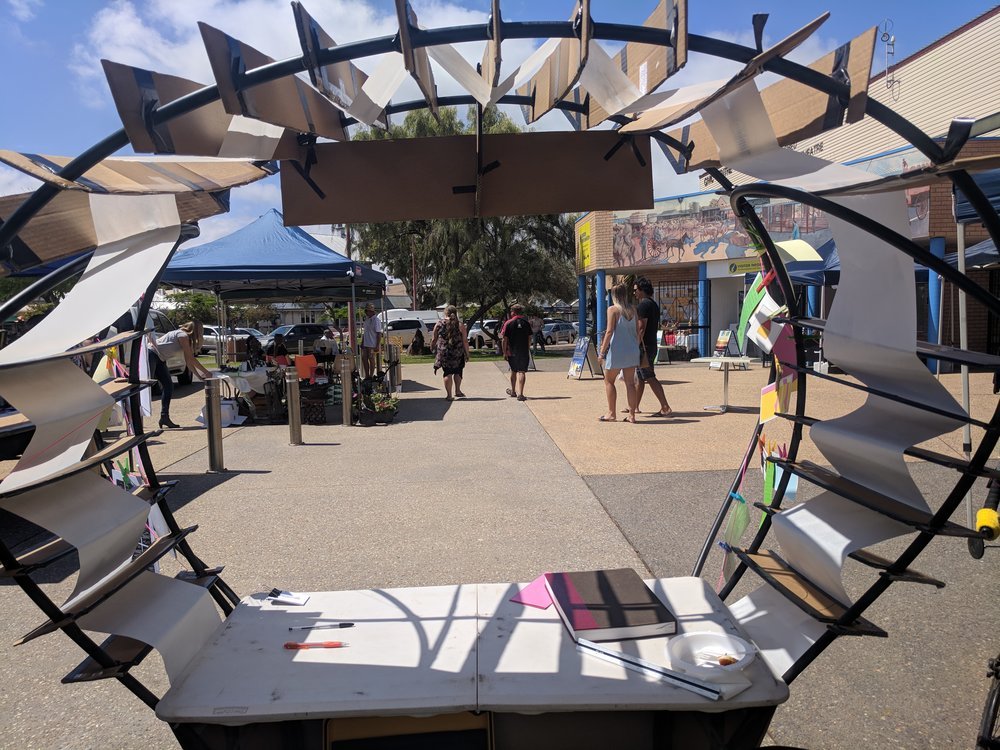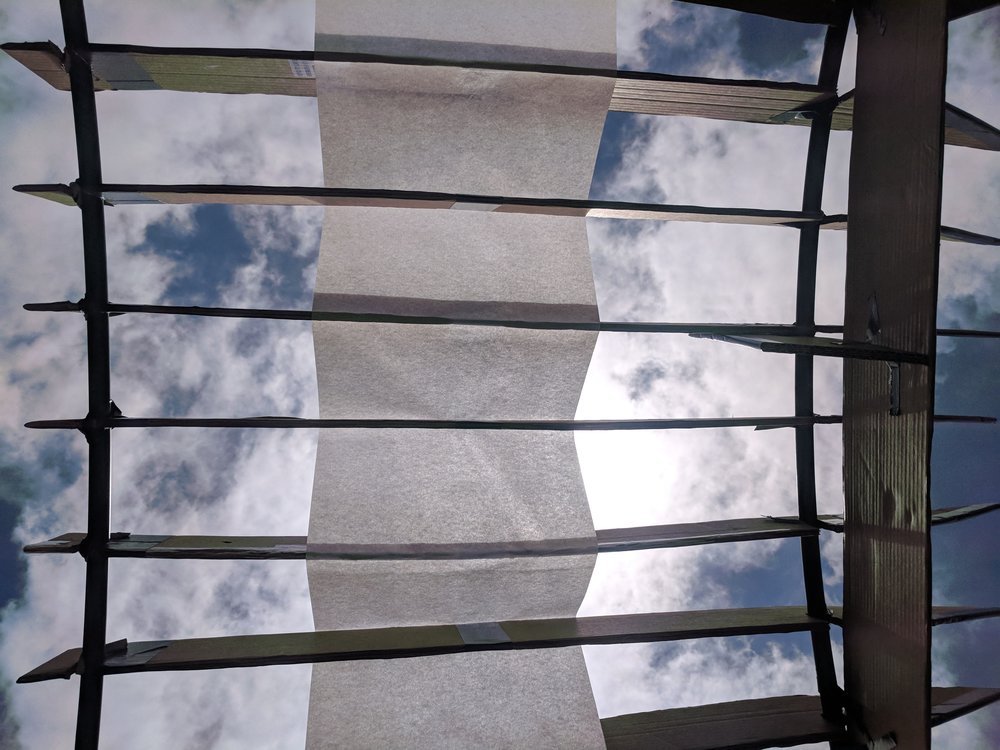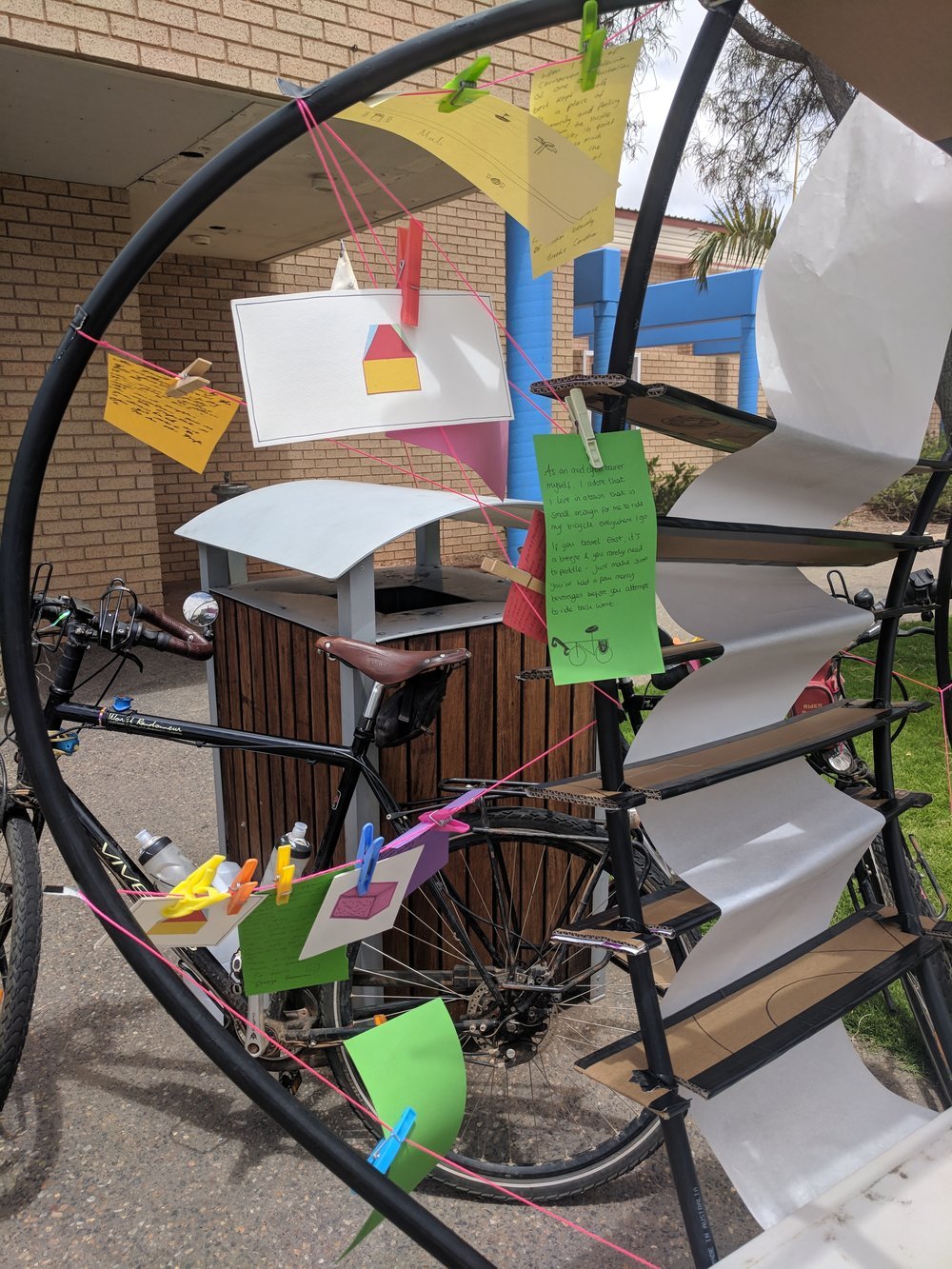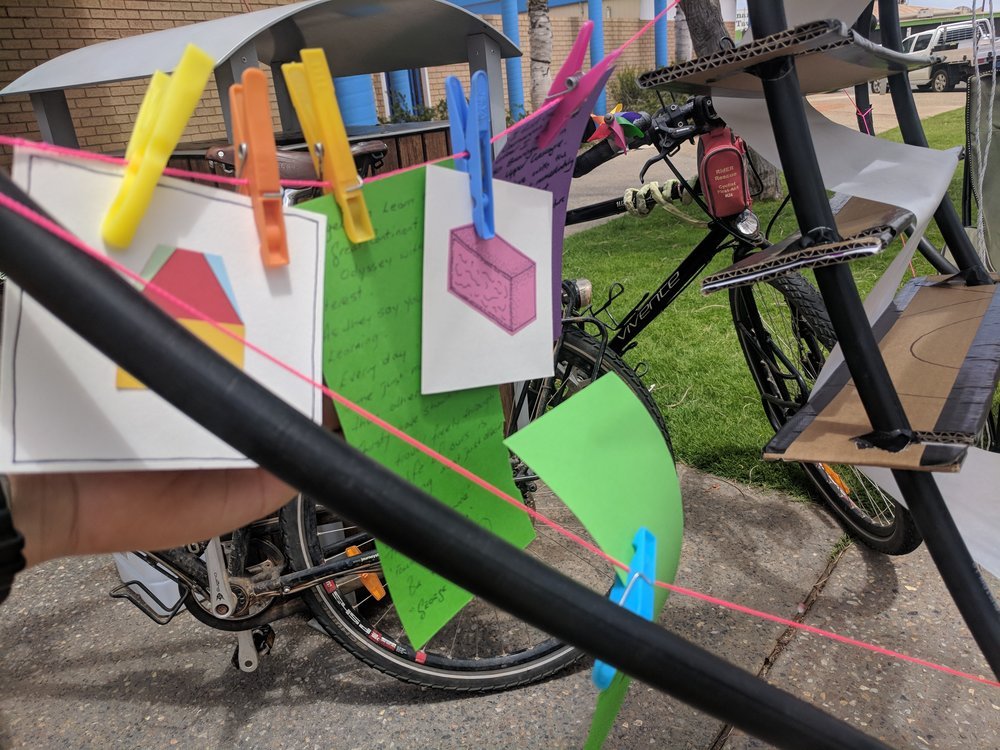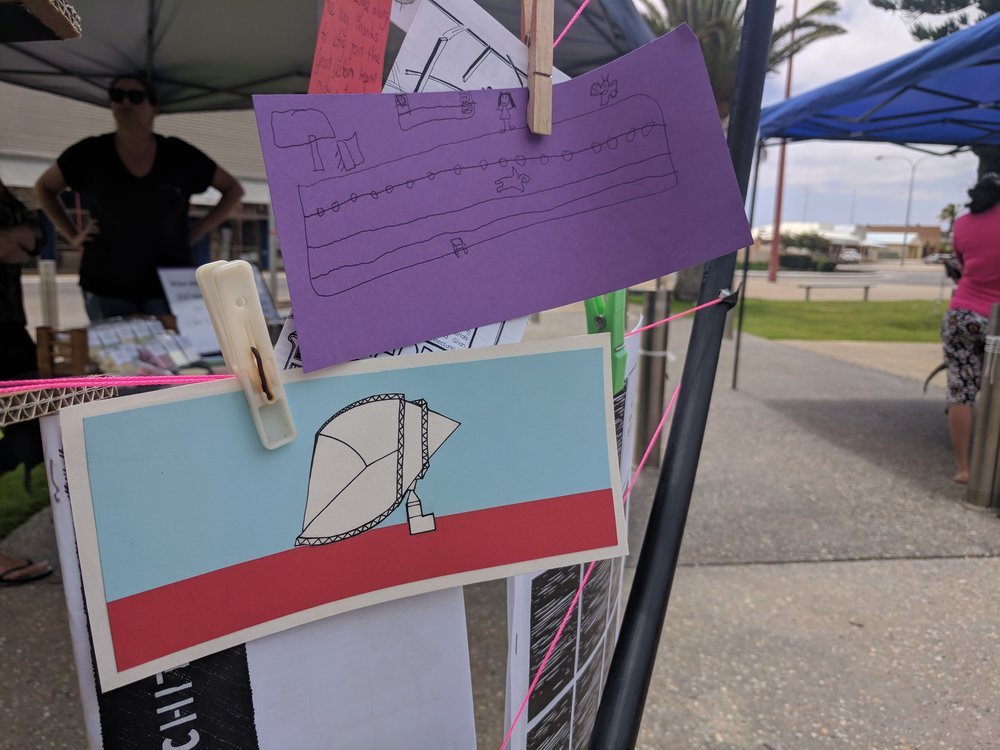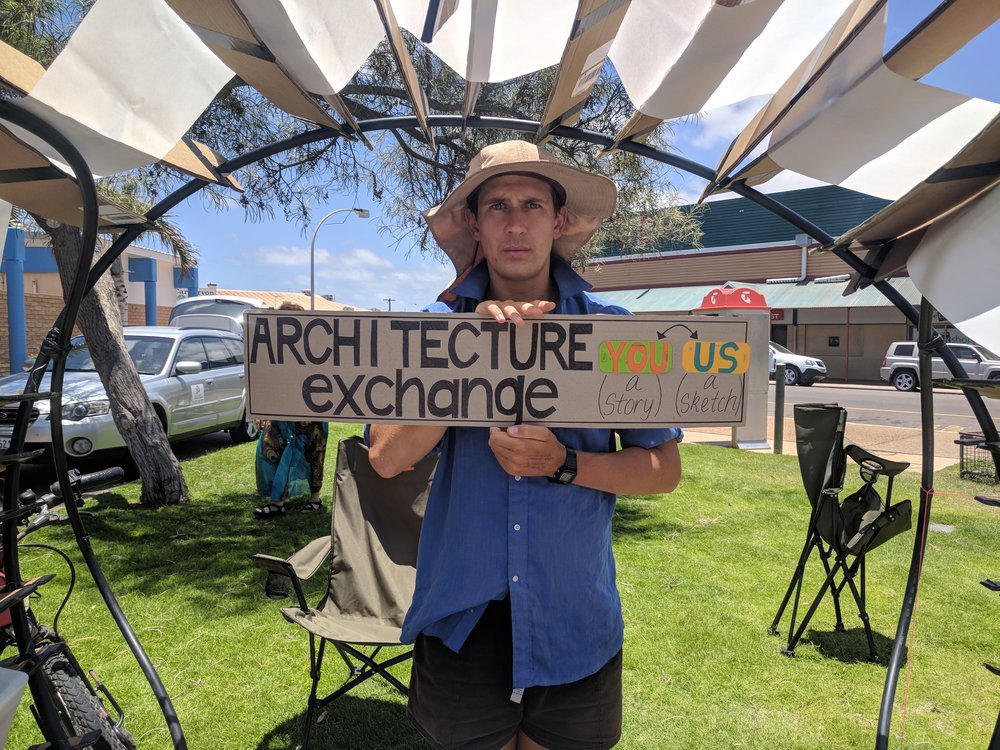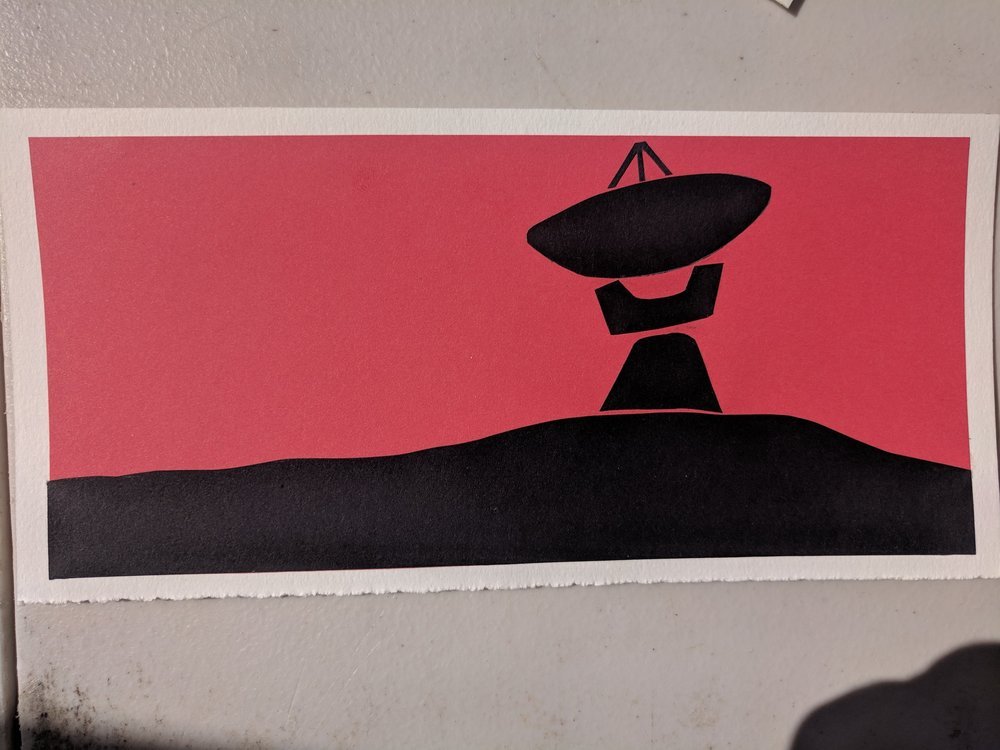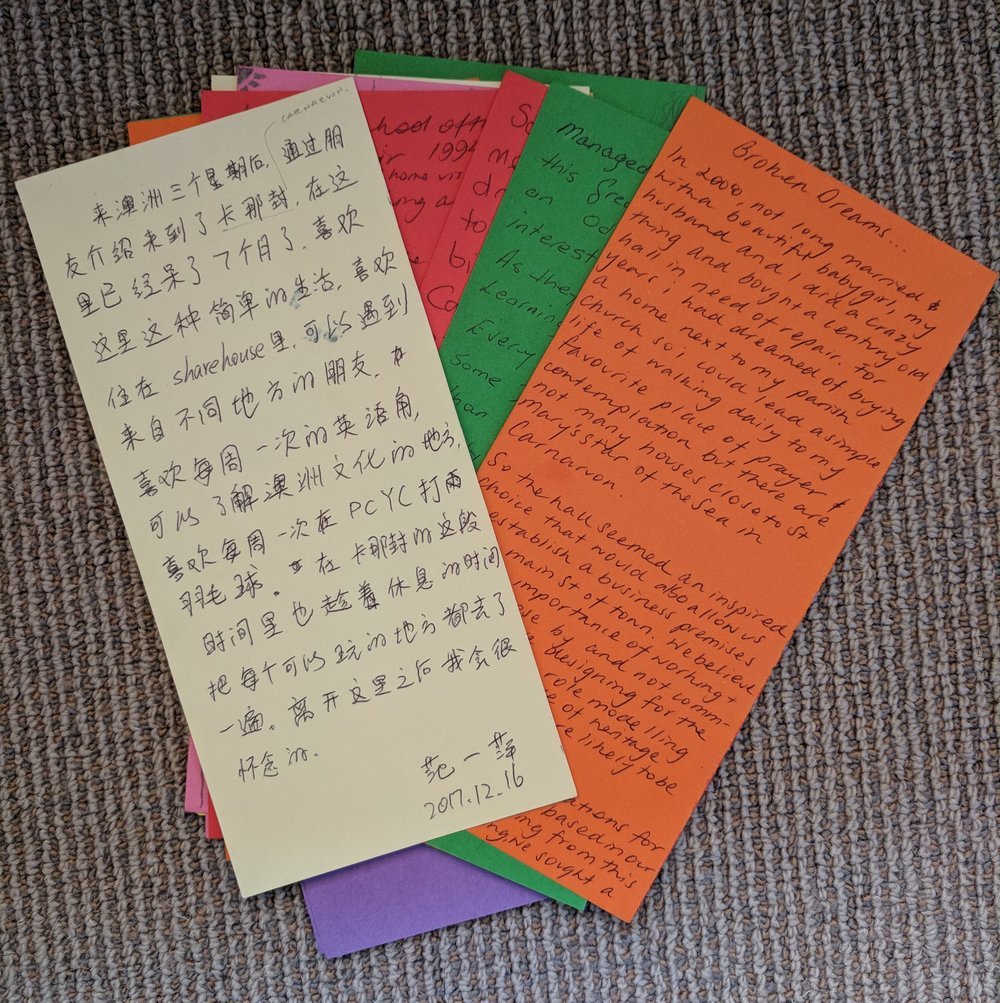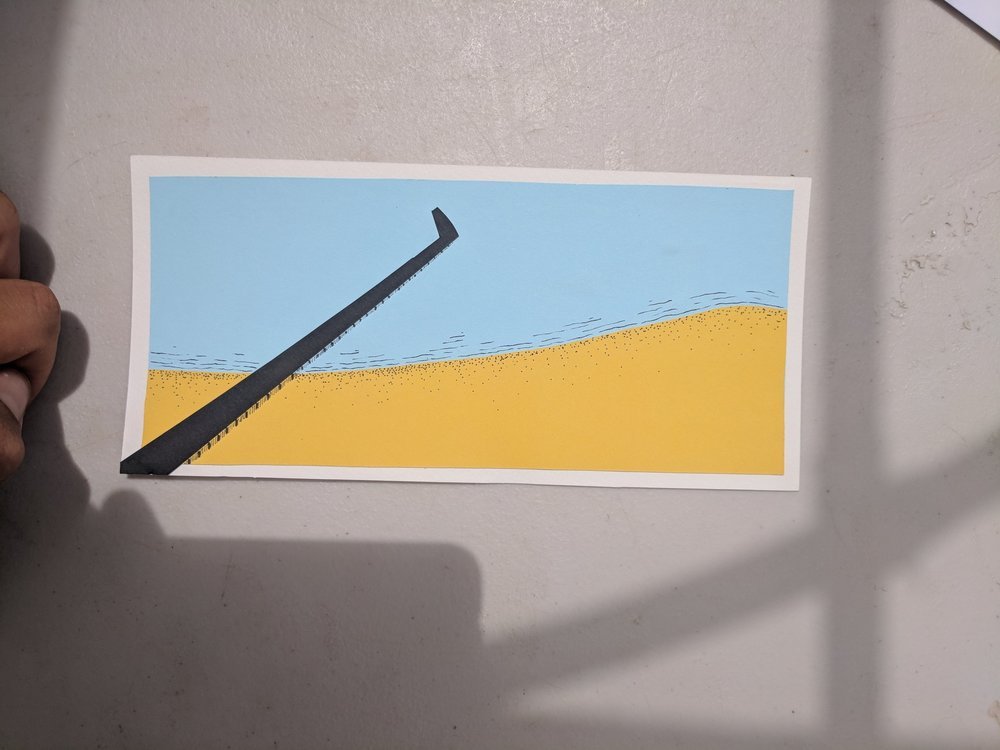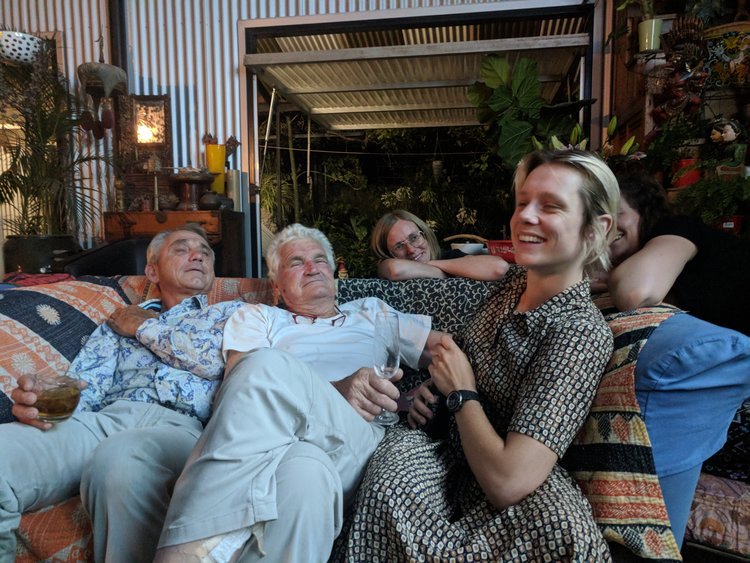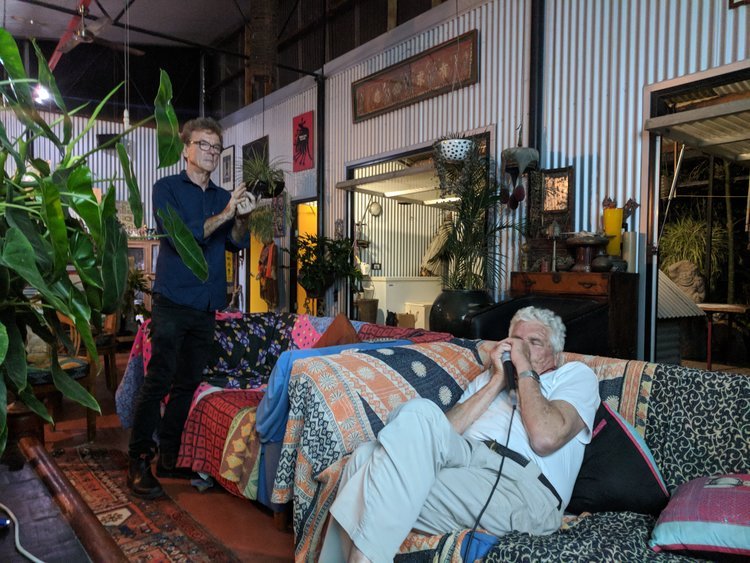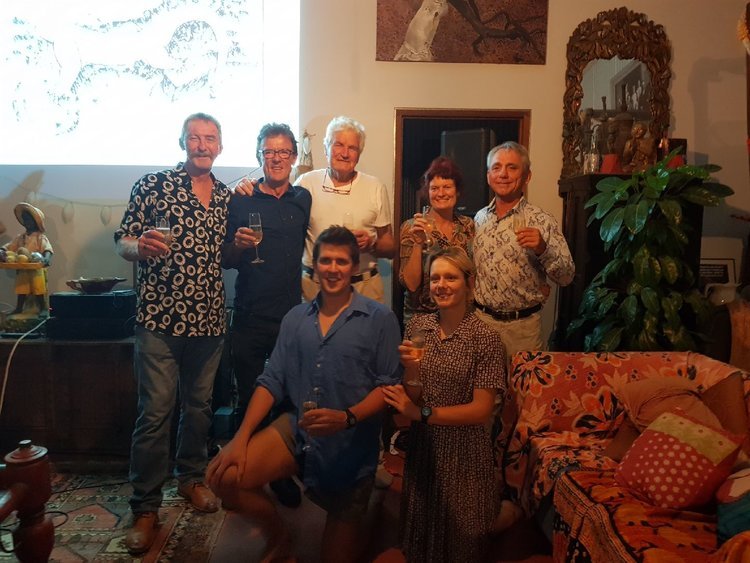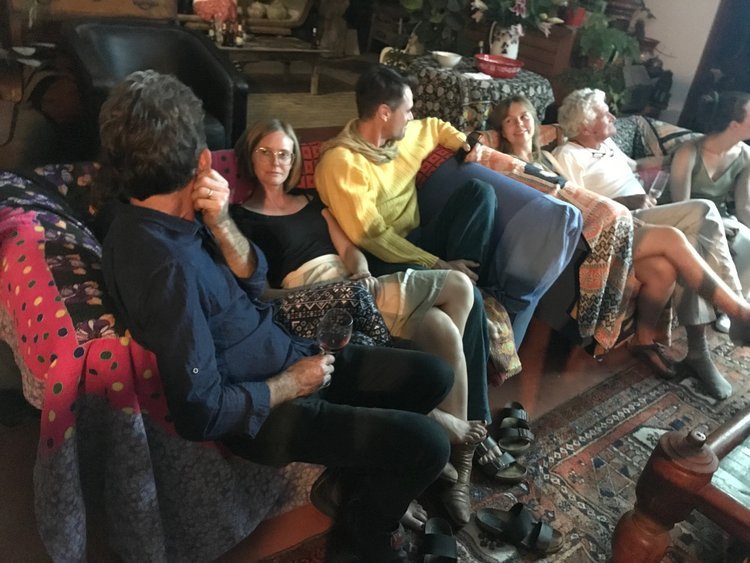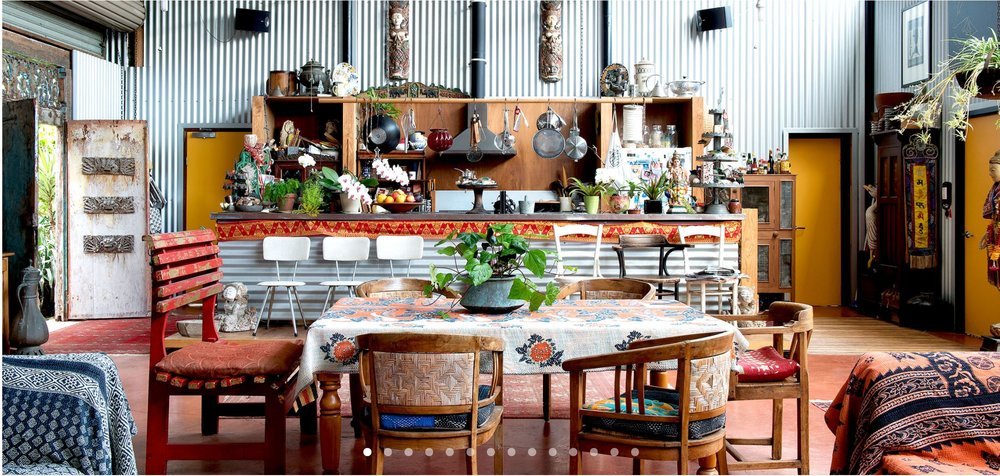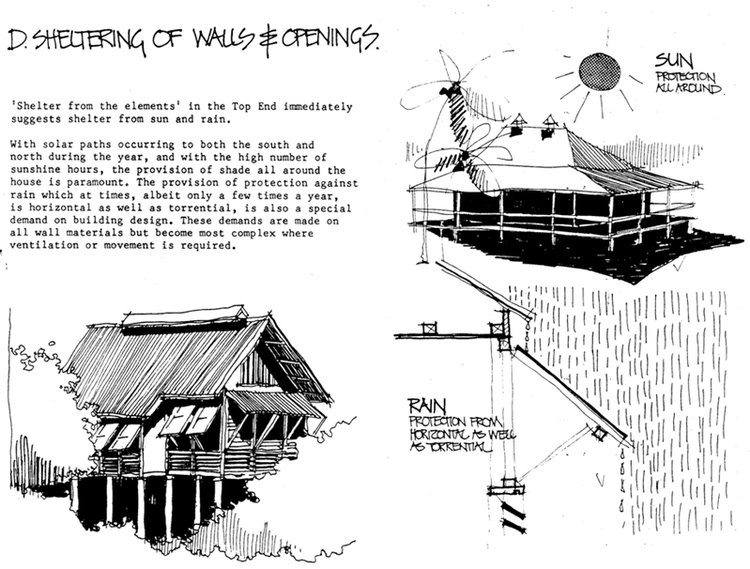The Grand Section Guardian #021 - Stop 21 Carnarvon (The final Stop)/ January 3, 2018
The most western point on the mainland on latitude 25 degrees south, restricted access to Bernier and Dorre islands, serious fishing country, “no-lore”, decades of wool, a fruit bowl, space exploration, a solar farm and a tourist haven.
Place
12th – 17th December, 2017
An incredible part of the Australian coast, where the scrub leads directly into the sea and the red dirt and the white sand mix.
Located on large alluvial plains with a sandstone base, Carnarvon’s red dunes and the acacia shrubs that hug the dune forms abruptly change to sand blasted white dunes that float across the road in serpentine waves. The Indian Ocean at Carnarvon is choppy and brown because of the Gascoyne River, sand is not the pristine white we had envisaged in our utopic dreaming due to clay sediments. All these elements are whipped together by the southerly’s that blow for months of the year, It is these same winds that keep the town of Carnarvon cool, so the 46 degree days that stifle inland Australia are mostly avoided.
The aboriginal name for Carnarvon is “neck of water” which seems like an appropriate metaphor for somewhere that connects bountiful resource to accessibility. Again the time taken to establish indigenous relationships is particularly tough in a week period, so our knowledge and experience of the original mob and their idea of the place is very, limited. What we know is only passed on through white folks and the few books in the local library.
The town of Carnarvon is situated at the mouth of the Gascoyne River which provides a natural harbour for recreational craft. This is a mostly dry river, running occasionally but for the most part it runs under the ground, an ‘upside-down river’. This junction of river and sea has proven to be powerful.
Chinamans Pool, an arm of the Gascoyne River which supplied the town with water and a swimming hole over the years. Father and daughter modelling team strut their stuff.
Strategically located in the middle of what was serious wool country, Carnarvon has carved its name through an astonishing amount of industries in a short time period. From the wool rush of the early 1900’s that exploited the nutritious rangelands of the area (Click here to check out Wooleen Blog for the current reality of this legacy) fruit and vegetable growing since the 1920’s, space exploration of the 1960’s, commercial whaling, fishing and tourist fishing to a solar farm today attempting to prove that alternate energy production is economically viable, Carnarvon’s place has proven extremely diverse.
A well-travelled smart-arse Jack Buzolic[i], in 1928, realising the similarities of Carnarvon to tropical conditions he had seen, made a recommendation to grow bananas and trialed the first crops on the alluvial sandy soil on the bank of the Gascoyne River. Carnarvon is now considered the fruit bowl of Western Australia (WA), providing approx. 70% of the state’s winter fruit and veg. At this time of year this country provides bananas, mangoes, zucchini, eggplant, pumpkin, watermelon, rock-melon and table grapes. Water is pumped from the Birdrong Aquifer or as the locals calls it the “upside down river” to water the excess of plantations throughout the year. This aquifer not only provides for the town’s pastoralism, 48% of all water pumped out is used for mining and industry. Anecdotally the water is getting saltier as the rate of use is exceeding the rate in which it is being filled. 10,000 years we’re told water takes to percolate down to the aquifer. On the note of water, almost no houses have gutters.
A long term local told us that Carnarvon is some of the best fishing in Australia, heck even the town runs on a fish ‘o’clock. If the “mullet are running” you’ll be getting that plastering job done later, the tradie simply won’t turn up. Carnarvon’s industries also reflect this abundance. As with many Australian cities around the similar time, whaling had a short stint in the town in the 1950’s with a yearly quota of 650 humpbacks legislated by the government. Eventually whaling was banned and prawns became the new go to, which still continues today. Fresh seafood is available from a shop just up from the commercial harbour. However, you would be hard pressed to find a local restaurant using the local seafood. The takeaway fish and chip shop was the only place we found using local fish.
The natural beauty, laid back lifestyle and location of Carnarvon in-between Geraldton and Exmouth means it is now cashing in on the tourism trade. With a population of about five thousand the town boasts seven caravan parks and houses about 1000 seasonal workers during the “on” season. At the glittering touristy heights at a minimum, one sixth of the town’s population is blow-ins.
Apparently Carnarvon is one of the world’s top three sunniest spots globally, up there with the Atacama Desert in South America. With its high levels of solar irradiation solar energy seems like a no brainer. However we haven’t been able to find any data to back this up yet, so don’t all rush in to invest! The latest diversification of Carnarvon’s industrious history is a solar farm, cashing in on the abundant sun. How this actually works with existing infrastructure is another story.
People
The indigenous history is once again murky, fragmented and contradictory. We were told that Carnarvon country could be (and the facts have to be checked with the local elders) “no-lore” country, acting like diplomatic immunity if you didn’t want to get speared. Women were unusually able to perform smoking ceremonies, where a deep understanding of place could tell of soil salinity levels by the presence and brittleness of certain plants. A place where people have a clear and long association with their history and affiliation with the place, more than one person talked of their ancestral link to the place generations before.
Sabrina, Dowling Giudici + Associates
Sabrina appeared much to our luck very near to us packing up our stall at the markets. She was lovely enough to agree for us to meet with her the next morning (Sunday) before we left town. A pretty incredible woman, who not only knows a lot but has also ‘thought’ a great deal. “Sundays are for relationships” she assured us when we expressed our thanks for having us over.
Sabrina is an artist and facilitator who made a holistic decision to invest in the place, Carnarvon, by not only ensuring her time and work attempts to be Carnarvon centric but also that any of her income and profits also stay in Carnarvon. This is in contrast to a lot of others in the area whose profits leave the area instead buying investment properties and the like in Perth.
She has bought an early 20th century building in the main street and has renovated it to make it a gallery, office and home. She talked of her Italian heritage and being part of the artisan class and how this naturally places importance on living and working close by (commonly in the same building) as well as being near to ones favourite place of prayer. In fact, it was preferred. Sabrina is so in touch with her ancestry that she knows the hill in Italy where her family is from and clearly has a deep connection to that place. The importance of place is embedded in her and due to her long lineage to this place; her name is a symbol for a great deal, recognised by other minorities such as the local indigenous.
Sabrina jumped in the van and quickly gave us a tour around town pointing out the 'Norwesters' and giving us the history of the geography, the town is built on former sand dunes!
John Mccloy
A well known, long term local, who plays an especially poignant role in the School of the Air. With Australia being the only country with school of the air, over his 23 years he’s loved everything about it, until now due to them closing the whole thing and amalgamating regional centers to a central Perth base. He talks of the romance of the prior method (until 2004) of teaching via radio and running home visits to students in the 500km radius of Carnarvon three times a year where teachers were not just ‘teachers’ but would become a part of each remote family’s life. Proof of the value the older generation has in the community, John volunteers at the space museum and on the local town’s tour imparting his knowledge and wisdom of the place on all who is willing to listen, tourist or not.
We have met people like John the whole way across the continent, ageing, retired, long term locals whose knowledge of their place is unmatched. They have consistently been the ones to give us time, knowledge and cups of tea. We have been blown away by the hospitality of ageing Australians. However again and again we see older generations moving away from where they have lived for better health services, access to pharmacy’s, doctors and the like. This is especially prevalent when moving into full time care in a purpose built dormitory with other roommates who are in the same situation. For us this is such a shame that towns and generations lose the ability to connect with people beyond their own age group who have often experienced and overcome many of the same issues and who can teach us so much about a place and how “things” work.
Thanks John.
Lex, Solex
Another local who talked about their ancestry, Lex Fullarton has long family ties to the area. Proud of his colonial heritage his family were some of the industrialists who built Carnarvon as we know it. One grandfather operated the ships that took the wool from the port and another one delivered it.
Lex is the brain behind the ‘Solex’ solar project that attempts to provide an economically viable model for alternate energy production. Lex has partnered with the local Horizon energy company to sell energy into the grid however this is hard to make a quid from. Lex has now created an ice making plant that uses energy from the sun to create ice, not remarkable in itself but the process of the plant is more interesting. The ice machines run all day and are bagged and stored in a cool room. Since solar power runs during the day the cool room is taken to -17 degrees during the day and heats up to -14 degrees at night time. The same technique is applied to the house where the air-con is left screaming all day and as the sun goes down and the solar power fades, they’re turned off with the house staying cool from its daily blasting. Lex’s approach to solar power is to use “shit-loads”, but change the pattern of use to use the energy mostly or only whilst you’ve got it.
Lex giving Owen the run down on how to use "shit-loads" of power
Donna & Nic, Coral Coast Caravan Park
Our hosts and managers of one of the seven caravan parks in town, luckily for us Donna and Nic are mad keen cyclists and adventurers and have convinced the park owners to operate “warm showers” within the park (free accommodation for cyclists). Donna and Nic are not uncommon in terms of what we have seen across the continent, outsiders who are intelligent and willing to take initiative are often the ones running tourist parks for a stint before taking their hard earned cash and moving on. However we have also heard stories of people expecting to stay for 18 months and end up there for 20 years. They are two intrepid adventurers operating off the ethos of using a new mode of travel each time they set off into the world from cycling to sailing and horse riding, next up….kayaking.
Donna was kind enough to partake in our exhibition on Saturday, sitting behind our market stall and yelling at other locals until they came over and participated. A power that us ‘blow-ins’ find it hard to wield, or even possible. The incredible ability of a local third party to persuade people to get involved is always appreciated by us. Thanks to Donna our Architecture exchange was actually quite successful.
Stuff (architecture)
Carnarvon is a town with a patch work history of, industry and black and white relations. The buildings of the town are symbolic of this. With no clear style, the town’s buildings flop around with varying constructions. Most of the grand buildings in the town centre though all belong to a similar time period of the early 1900’s when the place was thriving and the port was busy.
Pseudo-grand double story brick veneer mc-mansions take up the prime waterside real-estate. The pubs are even varied, where only one is of the scale and grandeur that we have seen in most other stops across the continent. The original homes of the place line one street (the first street in town), all dating back to 1890 - 1910 and were town houses built by many of the surrounding pastoralists. Well built, block and brick, generous verandahs to live in, large roof cavities for ventilation and well established gardens.
Dominating the biggest hill in the area is the Carnarvon Tracking Museum which has helped co-ordinate communication on missions such as Apollo 11 in the 1960’s. The old European Space Agency antenna is now only a base sitting just off from the main satellite dish. This ruin is now an expensive bird house which we thought was absolutely beautiful, the monumental power of simple geometries in concrete is hard not to like.
Perhaps the most important structure in Carnarvon is the now blocked off jetty. Made from serious hardwoods in 1891 and extending one mile out from the shallow shore of Carnarvon, it was widened in 1912 due to the demand of it being the largest exporting port in the Southern Hemisphere for some time. This was the catalyst for the towns industry, allowing wool to be taken by rail all the way to water, deep enough for cargo ships to pick up. There is an incredibly multicultural history with again Afghan Cameleers playing an important role.
Until recently this was operating as a tourist attraction but has very recently closed down due to the lack of maintenance, needing 35 million to rectify it back to a safe condition. The local gossip goes that the money raised to fix the jetty can be seen in the shiny new café right next to the jetty. And so, for its future? Well, like a lot of the hugely significant buildings we’ve come across it might stay boarded up until its final demise decades on.
One aspect we were very impressed with was the adaptations of some of the existing buildings. The hospital had a bunch of small additions to the exterior which essentially gave the building a facelift, re-invigorating interest and life into an ageing building. The same goes for the library which was a converted squash court with genuine attempts at engaging the street and retaining its original squash floor boards.
Something not unusual to similar places we’ve come across, there is a lack of and a dire need for suitable retirement and aged care facilities for the ageing population. The elderly are forced to move elsewhere (usually Geraldton or Perth), leaving their homes and communities they’ve often played a huge role in establishing which is a huge problem. It’s clear there is a great deal of opportunity for sensitive thinking around the ageing in the small towns and regional parts of Australia that ensures healthy and holistic ageing.
Exhibition, The Carnarvon X'mas Markets
Saturday 16th December, 2017
Our final exhibition was a bit different to our usual mediums. We capitalized on grabbing a stall at the local Christmas markets where instead of selling something we offered to exchange a local’s story or memory about buildings of the place for a small piece of documented architecture. The idea being that however much we document or look at buildings we cannot document another person’s experience or the anecdotal value of a building without their input. Since architecture is built for people, The Architecture Exchange asked for people’s stories about Carnarvon, a building or a place that they like in return for an architectural drawing, not the technical kind but a hand-made collage card - to get into the festive spirit.
Slow to get going, with the help of Donna calling over locals, momentum picked up over the four hours leaving us only with a few cards left. It’s hard to engage locals in such a thing as for some, approaching and talking to strangers, writing a story or making a drawing is an uncomfortable and out of the ordinary action, so to have been present in the main street for multiple days would have been hugely beneficial.
However the stories that came out of this were less about what people lived in and more about where they lived! The abundance nature provides, the temperate climate and flat coastal plain all came out in wonderful stories. Even the ever present wind was factored into people’s night outs with the travelling against the breeze saved for later in the night.
Suggestions
Industry should be sustainable, not only for environmental longevity but for regions to prosper. Carnarvon’s chequered history is an interesting lesson in exploitation, it works for a bit but ultimately fails
Creative agency is easily had in country towns but energy spent purely trying to survive can sometimes snuff out all but the hardiest enthusiasts
Ageing populations have immense social and cultural value to a town, we can do better.
A third party to vouch for you is priceless to create momentum, even better that it is local. Get someone with a loud voice to believe in what you are doing and you are away. Thanks Donna!!
Some things we learnt for this particular type of engagement:
Have a presence for multiple days in a frequented public place creating a sense of familiarity, comfort and ongoing conversation amongst the locals
Very clear, concise signage that explains what ‘customers’ are getting before they even walk your way. Most importantly that you are NOT selling anything!!
An eye catching stall or decorated space which lends in with the above point
A shady spot to sit under in your stall area where you’re ALWAYS visible
Just listen. Even if it’s uncomfortable or you’re hungry…
Stop #22: Dorre Island - The stop we couldn’t get to
One of Australia’s forgotten histories and the place where we were meant to finish our trip.
Thanks to a contact from Useless Loop we had a boat lined up to make the 60km (1.5 hour each way) trip to the island from Carnarvon and it all sounded go! However, in what is surely an appropriate way for a trip about ‘place’ to finish, the weather was too rough for most fishermen, one of the harbours had been clogged with sand so boats couldn’t move in or out and there was no good fish running in the deeper water. Our last option was for a flight over the islands, however after 10 months of sitting and sleeping in the dirt, not actually touching the ground on the island seemed like a cop out and by doing this it would have made it about the ‘destination’ without slowness, which is not what this whole thing has been about. So, in deep reverence to the place we had fish and chips and watched the sun set over the Indian Ocean instead. The horizon line was incredible, a jagged line far away proving the roughness of the sea.
Bernier and Dorre Islands themselves are small limestone outcrops with vegetation clingy desperately to the wind swept surface. Today, they act as sanctuaries for many endangered species, including the burrowing Bettong, banded hare-wallaby and the shark bay hoping mouse to name a few. These islands are so important because they contain no feral predators. They are free from cats, dogs and goats. Dorre Island is almost impossible to set foot on as it was under quarantine, not wanting to spread the human papilloma virus and risk the productive breeding of these endangered animals.
The inhabited history of the islands is brief and tragic. From 1908 to 1919 the islands were effectively prisons, called “lock-hospitals” for aboriginal people of the Carnarvon area with venereal diseases (thanks to the white fellas). Women were restricted to Dorre Island and men to Bernier Island. Whilst white-fellas were taken down south to medical facilities the blacks were shipped off to remote islands, away from their country, family and friends. It is said that 700 people were taken to the islands with up to 160 people reported to have died on these islands all now in unmarked graves. It is said this is the large reason for huge gaps in the indigenous history and generations from the local area.
In her famous book The Passing of the Aborigines, Daisy Bates recalls:
"Dorre and Bernier Islands: there is not, in all my sad sojourn among the last sad people of the primitive Australian race, a memory one half so tragic or so harrowing, or a name that conjures up such a deplorable picture of misery and horror unalleviated, as these two grim and barren islands of the West Australian coast that for a period, mercifully brief, were the tombs of the living dead. When I landed on Bernier Island in November 1910 there were only fifteen men left alive, but I counted thirty eight graves. There were seventy-seven women on Dorre Island, many of them bed-ridden. I dared not count the graves there." [i]

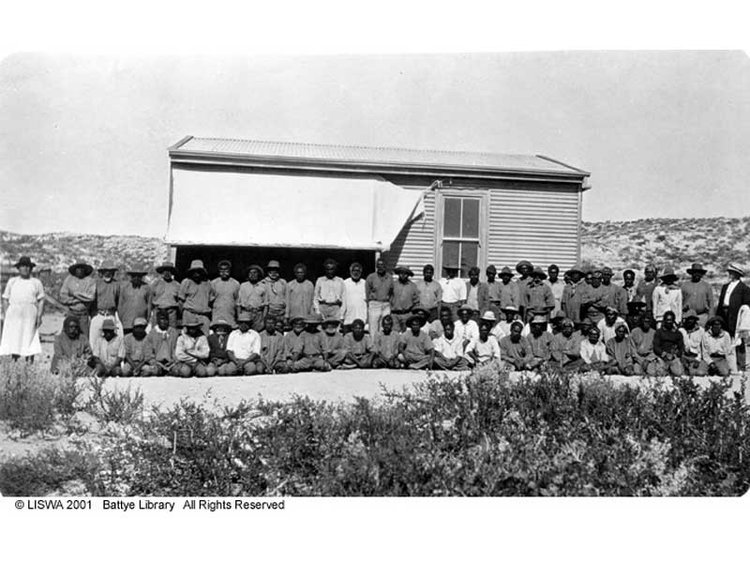
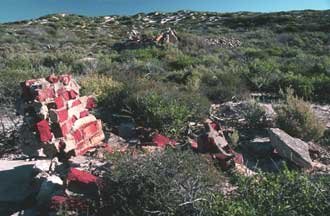
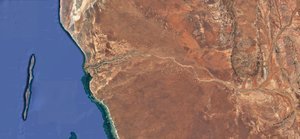
The In-between (Carnarvon – Perth)
17th -20th December 2017
Well this one is going to be different, 10kms no longer. The “britz” camper that our wonderful support crew had hired in Perth was the ‘new’ steed. 110kms with wind battering the sides we were plunged back into “reality”, very quickly much to our shock. We have some wonderful friends in Perth who had organised a party for us so we had to get down to Perth in three days. The route was direct with hundreds of kilometers thundering past through “nothing” country, landscapes that become so rich when slowness is added. Change was noticeable if you payed close attention, but not in the detail and level of understanding in which we were used to.
The Support Crew, Bobbies dad Chriss (R) & friend Gerard (L) excited to be a part of the team
We arrived on the night of Tuesday 20th December for a dinner with a pivotal precedent of ours and architect Adrian Welke of Troppo and our incredible professor Rick Leplastrier from the east coast who had made his way to Perth to ensure us a warm welcome. We were humbled to meet Adrian and have Rick there to share stories with, laugh and marvel at the Australian landscape which so few come to know. Two fellows who too have endured journeys, extensive Australian centric thinking and intimate time in landscape we yearned for a kind of ‘debrief’ with them on a mutual level of understanding. A powerful moment for us, especially after such a powerful journey.
The party on Wednesday the 21st December was organized by the wonderful Jamie Mayger and Daniel Martin who have shown support for us since the start! Riding in to the home of Adrian and his lovely wife Fran, food was being prepared, a band was playing and people arriving quite steadily. The party itself was flattering with about 50 people. Most were new faces, some familiar from architecture crews and some locals from previous stops made the journeys down to be there with all turning up to celebrate our arrival and hear our story. We barely thought people would be in support of the trip let alone something such as that! Rick gave us a humbling welcoming, introduction and congratulations and in his brief eloquence we were ensured that the past 10 months and such a journey was worth every moment. To the man who supported us our entire trip with constant email support and spurring on, we were grateful and privileged to have his congratulations.
We showed the film, which we had premiered in Meekatharra and answered any questions which were lingering. Afterwards we drank, talked, looked at photos, listened to Rick’s harmonica playing and danced in celebration.
Whilst it was a celebration of the 10 month journey and a clear demarcation of its ‘end’, it felt more like an opening party and the beginning of something much larger. Maybe, it’s just the start of “the best adventure yet… life”.
Still hammering away at blogs and the last vestiges directly related to the trip we haven’t really had time to decompress and realise it’s all over. Our minds are still racing trying to collect the last strings of the trip and tie it down to some place where we can leave it and get a proper look at it. For now Jaime and Daniel have adopted us for Christmas, showing us a landscape south of Perth where trees are of an unfathomable size, water is plentiful and the hills roll. We are due back by the 6th (fingers crossed) January on the east coast and thanks to a great lack of affordable public transport and being too stubborn to fly (far too quick) back we’re busily trying to work out a way back which will most likely be hitch hiking. Slowness is key right?
What’s Next...?
Well firstly, the transition back to reality we think will certainly be a tough one. The thought of a lifestyle not as in tune with the environment, the grind of our previous realities and back into operating out of a house is intimating.
Owen has promised himself one week off to play a video game in a dark room eating ice-cream
Bobbie wants to have a night of swing dancing
We need some time to reflect. Although we desperately need to get back in to earning money, we need to allow ourselves time to reflect and collect our thoughts. This mammoth journey is the stepping stone for what comes next; we must give it some time, but also welcome what will unexpectedly come
We are humbled to be invited to talk at the next international Deerubbin conference, March 2018 (http://www.ozetecture.org/masterclass/deerubbin-2018/)
We’ve got a book to write. If there is anyone out there affiliated with publishing, please give us some hot tips and convince someone to publish our book. Thank you to everyone who bought our book whilst we had it up for presale throughout our trip. Not only did this shotgun you a book, but it also kept us going financially whilst on the road.
We’ve got a touring national exhibition off the back of the bikes to organize and build. Planned for early to mid (May-Aug) next year 2018, we’ll be pulling all of our exhibitions and learnings into one large exhibition structure that will pop out of the back of our bikes and activate public space in cities and regional towns of Australia. Our aim is to reach as far as we can, continuing the conversation around Australian architecture and beyond our inhabited edge to the girth of this magnificent country. If you’ve got a space in your city we could activate or have a contact be sure to give us a “coowee”, or if you met us on our route before you might see us again!
We’ve got to build a house for Owen’s parents. Owens parents are ingeniously planning ahead for their aging and would like a small home in which they can age gracefully and easily in in the Blue Mountains, NSW. We have been offered the incredible opportunity of designing and building the home with our bare hands. We are so bloody eager to get in and actually start designing, taking all of this theory we have accumulated from our journey and start building! YEHARRRRR!
What about an architecture conference in the red centre? We’ve got to get out to the centre, broaden ourselves, our minds and affiliate ourselves with the reality of this country. Stay tuned…….
The ideas go on……..the future is bright and maybe a little sandy.
So folks, stay tuned.
Cheers for now,
Dusty & Thirsty
Edited by the brilliant Jen Richards - you are the bomb!
References
[i] http://www.aussietowns.com.au/town/carnarvon-wa
[1] http://www.australiaforeveryone.com.au/wa/bernier-dorre- history.htm


